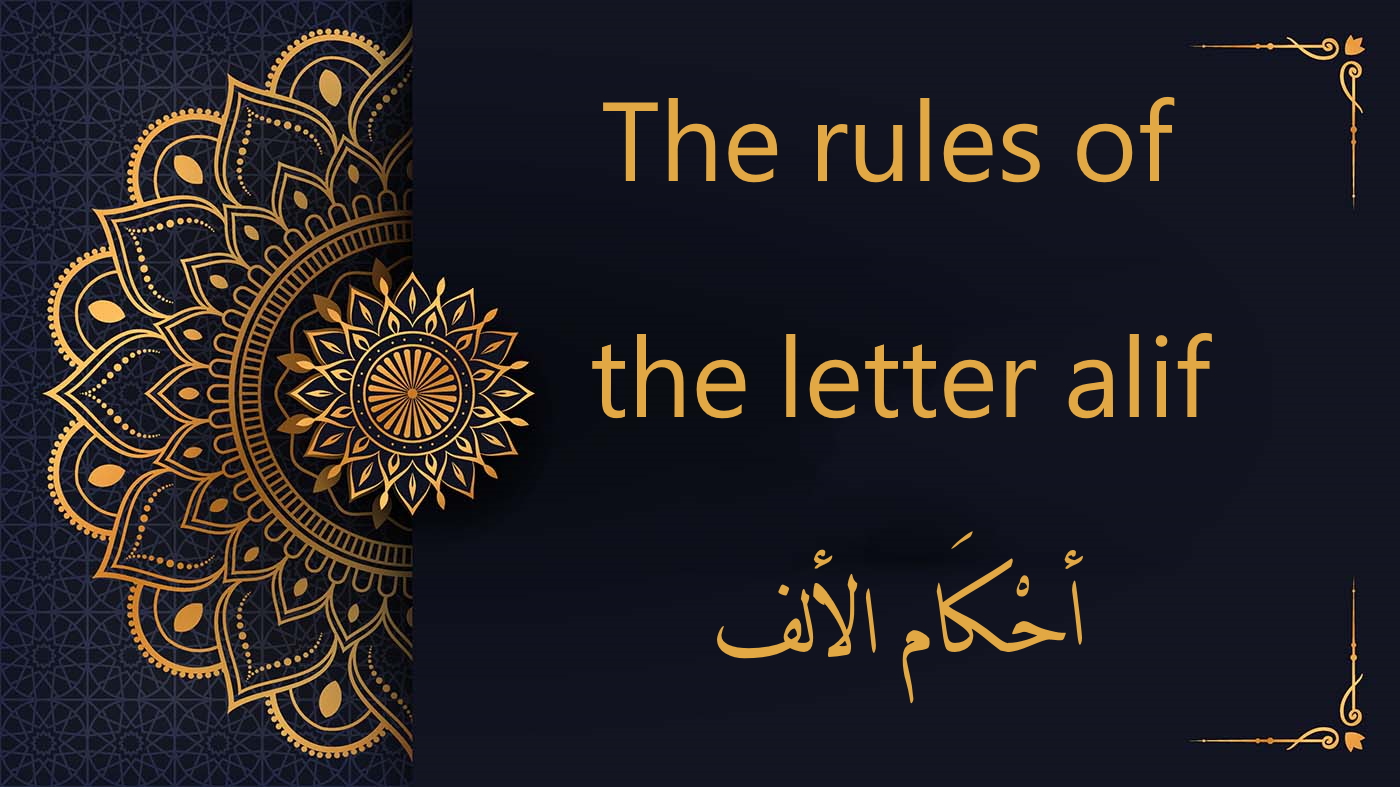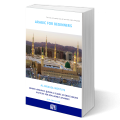
Tajweed Rules: Understanding the Role of Alif
The Letter Alif (ا) in Tajweed: A Dual Pronunciation
In the realm of Tajweed, the science of Quranic recitation, the letter Alif (ا) takes on a unique role. It can be pronounced in two distinct ways, each with its significance:
1. Emphasis (Tafkheem): When reciting Alif with tafkheem, you give it an emphatic pronunciation. This means that you fill your mouth when saying it, with the mouth in a vertical position. This pronunciation carries a certain weight and resonance, which adds depth to the Quranic recitation.
2. Lightly, Softly (Tarqeeq): In contrast, when you choose to recite Alif lightly or with tarqeeq, you articulate it softly, without filling the mouth. Here, the mouth takes on a horizontal position. This lighter pronunciation conveys a sense of gentleness and delicacy to the recitation.
These two approaches to pronouncing Alif play a crucial role in the rhythm, melody, and overall eloquence of Quranic recitation. The choice between tafkheem and tarqeeq depends on the specific context and rules of Tajweed. Mastering these nuances enhances your ability to recite the Quran with precision and beauty, allowing you to convey its profound messages with reverence and authenticity.
1. When Alif (ا) Takes Emphasis: Its Pronunciation with the 7 Emphatic Letters
Exploring Emphatic Pronunciation: Alif (ا) and the 7 Emphatic Letters
In the intricate science of Tajweed, which governs the precise pronunciation of the Quran, the letter Alif (ا) holds a distinctive place. It is recited in two distinct ways, and one of those ways involves emphasis. Specifically, Alif (ا) is pronounced with emphasis, or tafkheem, when it is followed by one of the seven emphatic letters in the Arabic language.
Let’s explore this rule in more detail:
Emphatic Letters: The seven emphatic letters, known as الحروف القمرية (the lunar letters), are ق (Qāf), ط (Ṭā), ب (Bā), ج (Jīm), ض (Ḍād), ك (Kāf), and ف (Fā). These letters are characterized by their unique articulation and are pronounced with added emphasis.
Emphasis on Alif (ا): When Alif (ا) is followed by any of these emphatic letters, it takes on an emphatic pronunciation. This means that when you recite it, you give it a sense of weight and resonance by filling your mouth, with the mouth in a vertical position. This emphasizes the letter’s presence in the word, adding a distinct auditory dimension to its pronunciation.
Understanding when to apply tafkheem to Alif (ا) in conjunction with the emphatic letters is a fundamental aspect of Tajweed. It ensures that the Quranic text is recited with the precision and respect it deserves. Mastery of this rule allows learners to convey the Quran’s message with eloquence and reverence, capturing the essence of its linguistic and phonetic subtleties.
Example:
صِرَاطَ الَّذِينَ أَنْعَمْتَ عَلَيْهِمْ غَيْرِ الْمَغْضُوبِ عَلَيْهِمْ وَلَا الضَّالِّينَ
The path of those upon whom You have bestowed favour, not of those who have evoked [Your] anger or of those who are astray. (1:7)
2. Alif Pronunciation: Light Recitation with the 22 Non-Emphatic Letters
Balancing Act in Tajweed: Alif’s Light Pronunciation with the 22 Non-Emphatic Letters
Within the intricate world of Tajweed, where precision in Quranic recitation is paramount, the letter Alif (ا) assumes a dual role. It can be pronounced lightly, known as tarqeeq, when it is followed by any of the remaining 22 non-emphatic letters in the Arabic alphabet.
Let’s explore this rule more comprehensively:
Light Pronunciation of Alif (ا): When Alif (ا) is paired with any of the 22 non-emphatic letters, it takes on a softer, gentler pronunciation. In this instance, you articulate it lightly, without fully filling your mouth, and with the mouth in a horizontal position. This light articulation brings a sense of delicacy to the pronunciation.
The 22 Non-Emphatic Letters: These letters differ from the emphatic ones and include الأبجدية العربية (the Arabic alphabet) with the exception of the seven emphatic letters: ق (Qāf), ط (Ṭā), ب (Bā), ج (Jīm), ض (Ḍād), ك (Kāf), and ف (Fā).
This rule highlights the meticulous nature of Tajweed, which ensures that every element of Quranic recitation, including the pronunciation of Alif (ا), is finely tuned. By mastering the art of tarqeeq with Alif, learners can elevate their Quranic recitation to convey the sacred text with grace and respect, preserving the beauty of its linguistic and phonetic intricacies.
Example:
إِيَّاكَ نَعْبُدُ وَإِيَّاكَ نَسْتَعِينُ
It is You we worship and You we ask for help. (1:5)
Conclusion
This Tajweed rules lesson has concluded. Insha’Allah, the next lesson will cover the rules of the letter Lam.
At the Al-dirassa Institute, we provide an accessible path to mastering Tajweed under the guidance of skilled instructors. Should you wish to pursue this further, we warmly invite you to reach out to us.
Chosen and Trusted by Thousands of Satisfied Learners
Discover the experiences of our delighted clients who have thoroughly enjoyed utilizing this standout feature.
Alhamdulillah I‘m very pleased with the arabic and Qur’an lessons I receive from teacher Umm Tasneem and I‘m also content with the al-dirassa administration team who were very quick in answering any questions I had. In a month I progressed a lot and I cannot wait to continue my studies with al-dirassa. May Allah reward everyone at al-dirassa.
 Verified review - view original
Verified review - view original
My Qur’an teacher is fantastic, she teaches me in a loving and kind way where I look forward to the lessons and learn so much. My Arabic teacher is equally as nice and has a lot of patience with me, she has great expertise in the field and I’ve progressed really quickly with her. Thank you Al-dirassa!
 Verified review - view original
Verified review - view original
Book your free trial lesson
Don’t want to go through the translation anymore?
30 free minutes with your qualified Egyptian teacher.




